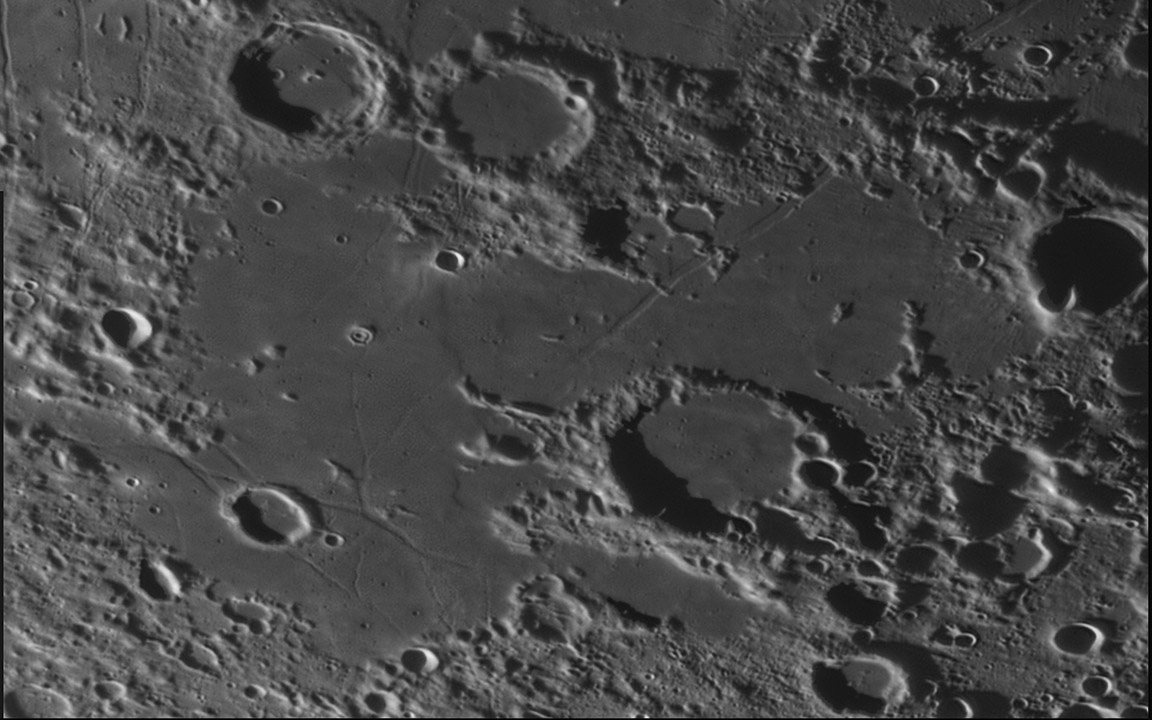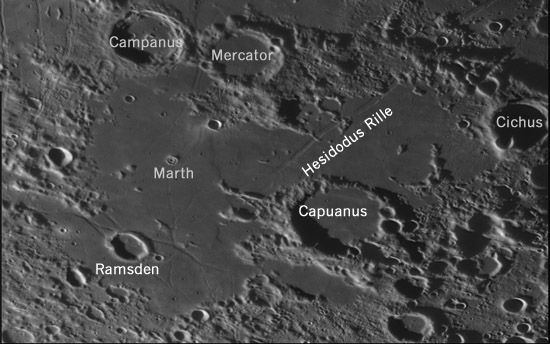December 22, 2023
An Epidemic of Wonders
Originally published December 5, 2013

image by George Tarsoudis, Greece
 |
In the US there is an old expression, The clothes make the man. For lunar imaging we can say, The scope and camera make the image. Over the last few years George used a smaller telescope and different camera to refine his technique to get the best image possible with that equipment. And now, with new and better equipment, all that refinement has instantly paid off, for George's images are among the very best LPOD receives. This is the bottom half of a mosaic that had so many interesting features that I present the southern part today, and the rest tomorrow. Start on the east with the shadow-filled Cichus, whose radial ejecta and rays are visible where draped across the mare. Just above that crater is a diagonal gash with a serrated edge, like a cutting knife. This may be the remains of an old secondary crater chain, but the source crater is not obvious. The flat-floored Hesiodus Rille slithers its way through hilly and mare terrains, disappearing in the middle of a probable old crater north of Capuanus. LRO QuickMap shows that the rille is offset, but weakly visible crossing the bottom of the proposed old crater and remnant crater rim. In George's image there is the hint of the now offset again, very shallow Hesiodus Rille extending to the Ramsden Rilles. In fact, this hint drove me to look at QuickMap which confirms the continuation. Two domes, one easy to see the other more difficult, occur on the southern part of Capuanus' floor, which is gently streaked by rays from Tycho. The southeastern most of the Ramsden Rilles has an unusual apparent branch that extents to the highlands to the south, and if you look closely even on to the highlands. This is not a rille but rather a chain of closely spaced secondary craters from the fresh crater at the north end of Hainzel; this has been noted before, but it is remarkable how the pits and tiny bright secondaries are visible here.There are other fascinating features here but I skip to Campanus, where the slightly curved rille crossing the floor is clearly visible; measures on Quickmap show that the northern portion of the rille is about 400 m wide.
|
Yesterday's LPOD: Down, Up, And Down the Alpine Valley
Tomorrow's LPOD: It's Back
COMMENTS?
Register, Log in, and join in the comments.



